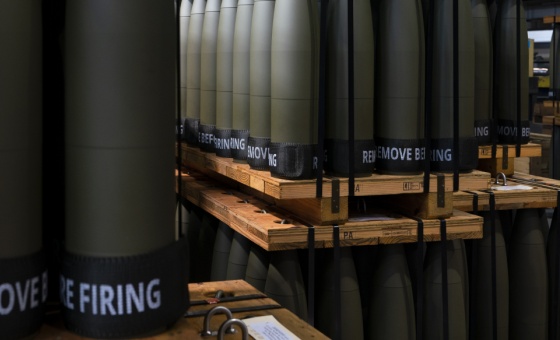This is the last article you can read this month
You can read more article this month
You can read more articles this month
Sorry your limit is up for this month
Reset on:
Please help support the Morning Star by subscribing here
There have been two opposing camps regarding the HS2 high-speed rail scheme from London to Birmingham and northern England.
Up until recently, supporters have ranged from government, the Labour opposition, rail unions and most of the northern local authorities.
Ranged against have been Chiltern “Nimbies,” some Greens, die-hard road-builders and assorted petrol heads who think the money should be spent on new roads.
Yet there is growing disquiet both within the railway industry and among many northern local authorities that the scheme as it stands is fatally flawed.
Far from delivering benefits to northern England, it could actually suck out wealth to London and the south-east and lead to a “two-tier” railway where each tier is ill-connected with the other.
The project was the brain-child of the last Labour government, driven by Lord Adonis during his spell as secretary of state for transport under Gordon Brown.
He was an evangelist for high-speed rail, seeing it as forming the backbone of a modern rail network and providing much-needed relief to an increasingly congested network.
His ideas were picked up by the incoming coalition government and the outline of the scheme began to emerge.
HS2, engineered to a very high speed of 400 km/h, would complement the London-Channel Tunnel HS1 and be constructed in two phases.
The first would head north from London to Birmingham, with phase two continuing on two diverging routes, to Manchester and Leeds, forming a Y shape.
To maintain the high speeds, intermediate stations would be very few and mostly avoiding city centres.
High-speed trains could continue to north-east England and Scotland by connecting links to join the existing West and East Coast main lines. (see map)
The original argument for HS2 was largely based on reducing journey times from the cities of Manchester, Leeds and Birmingham to central London.
The way governments have traditionally assessed transport investment schemes is heavily weighted towards journey time savings, and “business” journey time savings are given a disproportionately higher weighting as against “leisure” trips.
The assumption was that less time spent travelling allowed more time for productive work, ignoring the fact that a train environment can be a highly conducive place to get on with business.
When opponents of HS2 pointed this out, the arguments shifted to “capacity” issues.
State-owned Network Rail, which owns the railway infrastructure, has said that much of the network is approaching saturation point and the West Coast main line from London to north-west England and Scotland was particularly clogged up, with crisis point rapidly approaching.
The only viable solution was an entirely new line — HS2.
This argument does have more credibility, though critics have pointed out that there is quite a lot you could do with longer trains and selective enhancements such as the proposed Stafford by-pass and other improvements.
Other arguments have been put forward in support of HS2 which are less based on analysis and more on emotion.
The French, Germans, Japanese and Spanish have expanding high-speed networks, so we should, is a common cry from both politicians and rail supporters.
What is missing in all of this is a strategic analysis of the needs of a modern transport network for the next 50 years. What do we need our railways for? Is it just about ever-faster speeds? Journeys from Manchester, Leeds and Birmingham to London are already quicker by rail than any other mode.
We need a railway that connects the major centres of Britain by fast and accessible services and offers good connections to medium-sized and smaller communities.
It needs to be integrated with bus and light rail networks with easy access for cyclists and pedestrians. It has to provide capacity for freight as well as passenger services.
Many supporters of rail development have been fooled by HS2’s claims that this is the only show in town — and if we don’t accept what is on offer, the money will go back to the Treasury.
It’s a serious argument but if we accept what is on the table we will be paying the price for a sub-optimal scheme for decades to come.
It’s clear the supporters of HS2 are on the defensive. The recently published report by David Higgins, chairman of government-sponsored HS2 Ltd, abandons the vital link from HS2 to HS1, which would have allowed direct trains to the continent.
It proposes extending “phase one” to a new hub near Crewe, with the suspicion that we’re being prepared for the eventual dropping of the link to Sheffield and Leeds.
There are growing concerns that this is a property-led project which will give a massive boost to undeveloped areas on the fringes of major city centres which are already doing pretty well — London (Old Oak Common), Birmingham, Manchester and Leeds.
In the case of the three regional cities, HS2 will terminate at new stations which, in the case of Leeds and Birmingham, will be some distance away from the existing main stations with very poor links to local rail services.
By having “dead-end” stations you don’t connect up the major cities and towns, you just have lines running down to London which are ill-connected with the rest of the rail network.
The potential of HS2 in providing faster and more frequent links between the major centres is lost.
A much better approach would be for HS2 to use the existing major stations by providing additional capacity — if necessary by tunnelling – and enable cities like Liverpool, Manchester and Leeds to have fast direct connections from London and Birmingham which continue to Teesside, north-east England and Scotland. And northern Britain needs a direct link to the Channel Tunnel.
It’s interesting that two semi-retired railway civil engineers, writing on their highspeeduk.co.uk website have come up with a far more viable scheme than HS2 Ltd — with all its vast resources.
Their scheme really does integrate a new high-speed “spine” with the rest of the InterCity and regional network, using some disused alignments across the Pennines and along motorway corridors, with a lower — and less environmentally damaging — design speed which allows greater flexibility in the route.
Labour’s response to HS2 has been to question the cost, but not the scheme itself, though some Labour-controlled authorities like Wakefield and Bradford are questioning the project.
Many towns and cities not directly served by HS2 will have poorer InterCity services while London will benefit by further extending its “reach” for long-distance commuting and business trips from the “London office.”
It’s increasingly obvious that this is a highly London-centric scheme.
Labour, the unions and transport campaigners need to get their act together and come up with something that really would be transformational, providing a vastly improved integrated transport network which underpins sustainable economic growth across Britain as a whole and can be delivered much more quickly.
But there’s another aspect too. New high-speed railways must stay part of the national, state-owned infrastructure. And the huge investment in new trains and services must not result in the private sector being handed a lucrative “franchise” to run the service. The campaign to keep a reformed HS2 public should start now.
Paul Salveson is visiting professor in transport and logistics at the University of Huddersfield. His book Railpolitik — Bringing Railways Back To Communities is published by Lawrence and Wishart.








